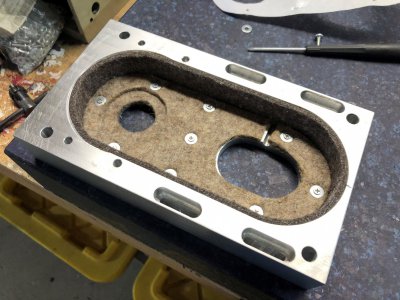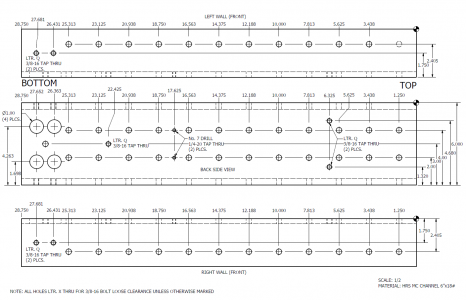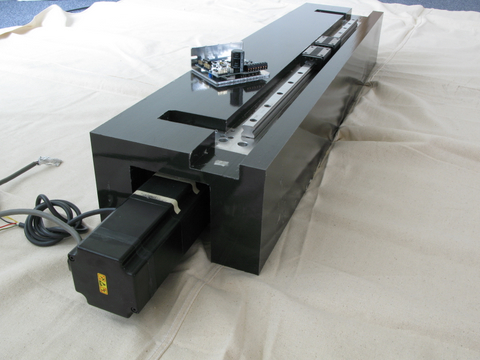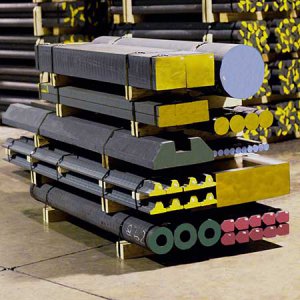Well I think we have a hung jury!
In all seriousness this is a good conversation and I’ve spent weeks pondering the options. I’ll try to summarize the goals and how I got to this decision (and hey, I might still be wrong).
Goal: To increase rigidity of the cutting tool due to column flexture and vibration. Scraping all parts for a better fit might be all the improvement I need but I figured I would experiment with this. Needs to be completed quickly and cheaply.
Option 1: Float the MC channel around the column and cure in-situ with epoxy granite. Provide some method of bonding epoxy granite to column and channel.
Pros:
- Minimal bolting to the column limits stresses induced into the assembly
- Minimal deformation of way surfaces limits scraping efforts
- Potentially simpler to implement thanks to less machining
Cons:
- Cost of epoxy granite is significant ($200+)
- Epoxy granite recipes are highly debated and no obvious winner is available online.
- Sourcing the proper aggregate for epoxy granite is difficult and most needs to be purchased in significant bulk adding to cost.
- Structure depends on the ability for the epoxy to securely bond to painted cast iron and steel. Delamination would ruin the structure and many factors could cause this.
- Epoxy shrinks ~2%. This could either cause delamination or stresses into the column.
- Filling a 1/2” gap 30” deep with material the consistency of firm wet sand within a short 20 minute working time could be quite difficult.
- My original plan involved screwing short flat head cap screws to the outside of the column and inside of the channel to provide something for the fill to bond to. This would require just as many drilled and tapped holes as option 2.
Option 2: Bolt MC channel to column on 3 sides with a significant number of bolts and precision machined spacers. Fill gap between column and channel with some material (epoxy granite, expanding grout, loose sand) for vibration damping.
Pros:
- Straightforward assembly with a drill press and lathe to make spacers
- Relatively low cost ~$75 in hardware
- Guaranteed solid connection between channel and column which will not loosen over time
- Entire assembly can be assembled and proved to be in good order before locking bolts and backfilling with curing material
- Curing material fill is not structural and the risk of delamination is reduced.
Cons
- Fair bit of machining needed for drilling the channel and fabricating spacers. Spacers need to be individually measured to ensure they are a snug fit
- Significant risk of inducing stress into the column and deformation of the precision way surfaces. This is discussed more below.
So in my head, I originally started where
@mattthemuppet2 was thinking with bolting the channel on all sides because I figured this would be the best way to utilize the strength of the MC channel. Then I got myself concerned (similar to you (
@Rex Walters) about stresses in the column and causing me headache in scraping later. So then I went to the concept of bolting the channel to the back of the column and then curing epoxy granite or expanding grout between the two, but I had significant concerns about cost of epoxy granite (and complexity of the recipe) and the ability for the grout to adhere to the surfaces. If the surfaces didn't adhere, then the channel would not add any strength to the assembly and it would be a big waste. So after being questioned on the design, I flipped my opinion back to rigidly bolting the assembly and filling for vibration damping.
I am concerned about adding stress to the column with the bolted assembly, but I think it can be managed. First off, I think stress is OK in the column since it will be scraped flat after assembly. Cast iron shouldn't (???) creep over time as the creep threshold temperature is somewhere around 450*C. So as long as the applied stresses don't change (thread lock, fully cured infill, etc.) then the casting deformation should be constant over time. Additionally, I will be making each spacer to the exact size needed and alternatively torqueing all the bolts to equalize the stresses all over the column. Finally I can indicate the way surfaces as I am tightening everything to ensure the deformation stays within a thou or two so I don't need to scrape too deeply to bring the surface true. Only once I'm happy with the geometry, then I can apply Loctite red to each bolt and torque to spec, then do the curing fill. Once the surfaces are scraped true, then I would not expect movement over time of the assembly.
Also, I'm not aiming to come up with the perfect solution, it just needs to be better than the original column, not cost much, and not take too long to complete. I'm trying to make continuous progress on this project and don't want to stall on the column reinforcement.
Thoughts?





